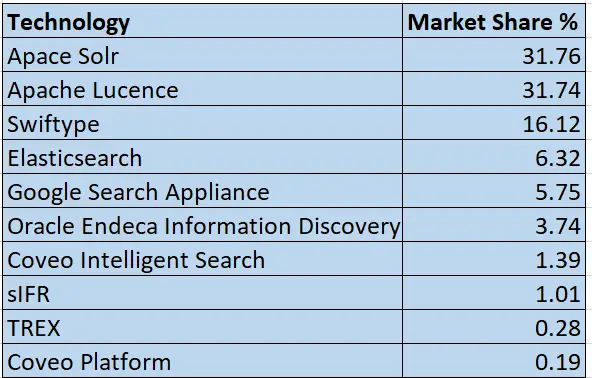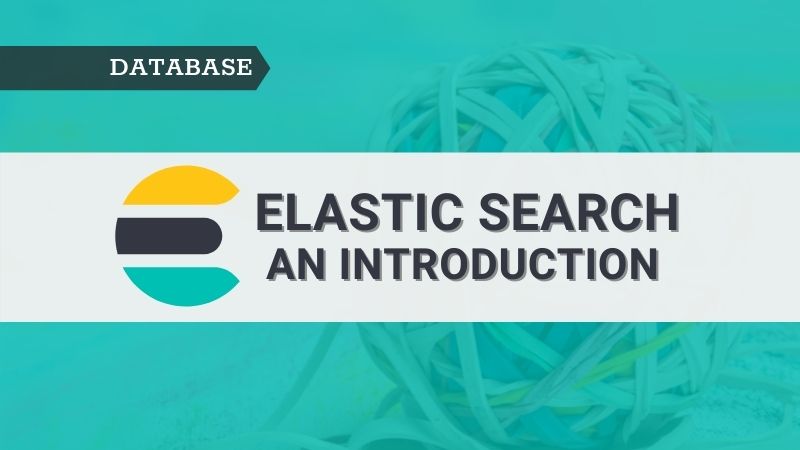Introduction
If you would like to know what is Elasticsearch, why should we use Elasticsearch, what are the alternatives/competitors to Elasticsearch then you are in the right place. In this article, I will try to answer all these questions. So, let’s get started.
What is Elasticsearch
As mentioned on the official page, Elasticsearch — is a distributed, open-source search and analytics engine for all types of data, including textual, numerical, geospatial, structured, and unstructured. Elasticsearch is built on Apache Lucene.
So, what does this means?
Distributed — a distributed system contains multiple nodes/machines which are spread geographically but connected together so that they can communicate and coordinate to achieve a common goal.
Open-source — the original source code is freely available and can be modified.
Search & analytics engine — a system capable of searching a given text/keyword in the database and display relevant data to the end-users. This is much like Google or Bing search engine.
Data — Elasticsearch works with both structured and unstructured data such as textual, numerical, geospatial, etc.
Apache Lucene — Apache Lucene is a free and open-source search engine written in Java. It is supported by the Apache Software Foundation and Elasticsearch is built on top of Lucene.
Why use Elasticsearch
(1) Distributed: Elasticsearch is a distributed document store. The documents are stored in the nodes which are distributed across the cluster and can be accessed from any node.
(2) Scalable: Elasticsearch provides the ability to quickly increase or decrease the server (nodes). Elasticsearch automatically distributes the data and query load across all of the available nodes.
(3) Fast: Elasticsearch is blazing fast. It can search the document in near real-time usually less than a second. Note that there is little latency between the time when the documents are indexed and when the documents are ready for search. Elasticsearch uses a data structure called ‘inverted index’ which helps in very fast full-text searches.
(4) Schema-less: Elasticsearch is schema-less. This means that we don’t have to necessarily specify the data type of each of the fields in the document. If the dynamic mapping is enabled, Elasticsearch is smart enough to identify the data type when indexing the document.
(5) Rich set of features: The Elasticsearch comes with powerful built-in features that make storing and searching data even more efficient. The Elastic Stack Logstash, Kibana, and Beats makes data ingest, visualization, and reporting easier.
Elasticsearch Vs RDBMS
Relational Database Systems (RDBMS) are not suitable for full-text search, synonym search, phonetic search, log analysis, etc. Elasticsearch is specifically designed for enormous text searches and it is really quick!!
Note that the more data we want to search, the more relevant Elasticsearch becomes.
Elasticsearch is not meant to be a primary data store so the expert’s recommendation is to use a simple RDBMS like PostgreSQL and Elasticsearch for search functionality.
What is Elasticsearch used for?
The full-text search is the core functionality of Elasticsearch. Some of the use cases include:
- Enterprise search
- E-commerce search
- Logging and log analytics
- Analyze application logs and system metrics (Application Performance Management)
- Forecast future values using Machine Learning
- Scraping remote data from multiple sources
- Geospatial data analysis and visualization
Competitors
These are some of the competitors to Elasticsearch. Currently, Elasticsearch is in the top 5 w.r.t. market share.

The Elastic Stack
As mentioned earlier, the full-text search is the core functionality of the Elasticsearch. It also provides other functionalities such as logging, analytics, visualization, etc. by software that are part of The Elastic Stack.
Earlier Elasticsearch, Logstash and Kibana together was referred to as ELK stack. Recently Beats got added to it and currently, this combination is called The Elastic Stack.
Kibana
Kibana is one of the core products of the Elastic stack. It is used as an analytics & visualization tool for creating real-time histograms, line charts, pie-charts, etc. It can also manage some of the functionalities of Elasticsearch and Logstash via its web interface.
Logstash
Logstash was designed to process logs from applications and send them Elasticsearch for further processing. However, in recent years it many more advanced functionalities are added to Logstash.
Beats
This is a recent entry to the Elastic Stack. It includes a collection of lightweight shipping agents known as Beats that are used to send data to Elasticsearch.
Conclusion
In this blog post, you understood what is Elasticsearch, when you should consider using Elasticsearch, real-world use cases, its competitors, and finally, we looked at what tools constitute the ELK stack. Based on my experience using Elasticsearch, I recommend you if you are building a search engine for your client or your personal projects.
References
[1]. https://marutitech.com/elasticsearch-can-helpful-business/
[2]. https://www.elastic.co/

